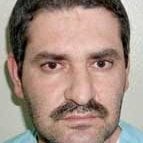
1964 - 2002
Aimal Kansi
Summary
Name:
Nickname:
KansiYears Active:
1993Birth:
February 10, 1964Status:
ExecutedClass:
MurdererVictims:
2Method:
ShootingDeath:
November 14, 2002Nationality:
USA
1964 - 2002
Aimal Kansi
Summary: Murderer
Name:
Aimal KansiNickname:
KansiStatus:
ExecutedVictims:
2Method:
ShootingNationality:
USABirth:
February 10, 1964Death:
November 14, 2002Years Active:
1993bio
Mir Aimal Kansi, also spelled Kasi, was born on either February 10 or October 22, 1964, in Quetta, Pakistan. He came from a well-respected Pashtun family, and his father, Abdullah Jan Kasi, was a tribal leader. When his father passed away in 1991, Kansi inherited a large sum of money and decided to move to the United States in search of a better life.
He entered the U.S. using forged documents and settled in Reston, Virginia, where he lived with a friend, Zahid Mir. Kansi invested in a courier business and worked as a delivery driver, which helped him learn the Washington, D.C., area. However, over time, he became angry with U.S. foreign policy, particularly regarding Pakistan and the Middle East.
murder story
On January 25, 1993, Kansi left his home in Reston, Virginia, and drove to the entrance of the Central Intelligence Agency (CIA) headquarters in Langley, Virginia. He was armed with a Type 56 assault rifle, a Chinese version of the AK-47. As he approached the CIA building, he saw multiple cars waiting at a red light to enter the compound.
Without warning, Kansi got out of his vehicle and opened fire on the stopped cars. He fired ten shots, killing two CIA employees—Lansing H. Bennett (66 years old) and Frank Darling (28 years old)—and wounding three others. After the shooting, he calmly returned to his vehicle and drove away.
Authorities immediately launched a nationwide manhunt, but Kansi had already escaped the country. He flew to Pakistan and later hid in Afghanistan for several years. The FBI and Pakistani authorities continued to search for him, and in 1997, an informant tipped them off about his location. On June 15, 1997, he was captured in a hotel in Dera Ghazi Khan, Pakistan, by a joint team of FBI agents and Pakistani police. He was then extradited to the United States to stand trial.
Kansi went to trial in November 1997, where he pleaded not guilty. However, the evidence against him was overwhelming. He was convicted of capital murder, attempted murder, and firearms violations. On February 4, 1998, he was sentenced to death.
After spending several years on death row, Kansi was executed by lethal injection on November 14, 2002, at Greensville Correctional Center in Jarratt, Virginia.